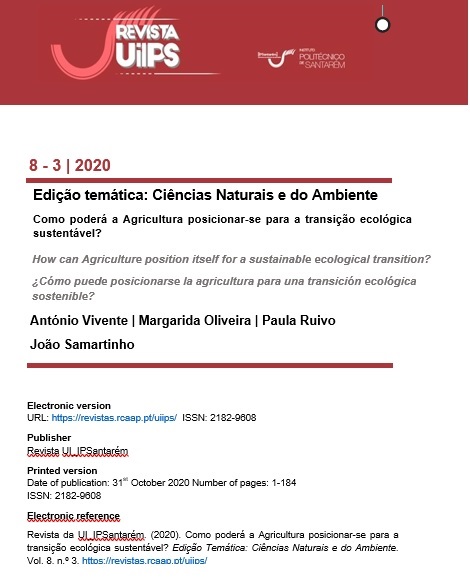Case study: Productivity of the conservation and improvement nucleus of the swine breed Malhado de Alcobaça from EZN-INIAV IP
DOI:
https://doi.org/10.25746/ruiips.v8.i3.21335Keywords:
interval between births, Portuguese native breed, piglet, sow, prolificacyAbstract
A study was carried out on the Portuguese native swine breed Malhado de Alcobaça, belonging to the conservation and improvement nucleus of EZN-INIAV, IP, with a view to its productive characterization. In this characterization, individual records of 43 sows with 173 births (June 2015-May 2019) and records from 2479 piglets and 4274 weights (September 2015-January 2020) were used. The global average values for the number services for fertilization were 1.81±1.58 inseminations, with a birth interval of 190.54±48.46 days, average prolificacy of 9.51±3.32 piglets and average duration of suckling 42.29±6.00 days and an average number of weaned piglets/sow of 6.59 ± 2.63. The birth weight was 1.33±0.30kg and showed a significant relationship with litter size, reducing by 20 grams for each additional piglet born. At 30 days of age, the weight was 6.86±1.73kg, significantly influenced by the age of the mother (maximum 26-28 months). Piglets at 90 days had an average weight of 27.14±7.32kg.
This swine nucleus is fundamental to preserve this endangered native breed, due to the possibility of studies, dissemination of genetics to other producers. The results obtained suggest the existence of low reproductive performance that must be analyzed in an attempt to improve reproductive parameters, namely through some management practices and minimization the increasing values of inbreeding.
Downloads
Published
How to Cite
Issue
Section
License
Authors publishing in this journal agree to the following terms:
Authors retain copyright and grant the journal the right of first publication, with the article simultaneously licensed under the Creative Commons Attribution License that allows sharing of the work with acknowledgement of authorship and initial publication in this journal.
Authors are permitted to enter into additional contracts separately for non-exclusive distribution of the version of the article published in this journal (e.g., publish in an institutional repository or as a book chapter), with acknowledgment of authorship and initial publication in this journal.
Authors have permission and are encouraged to publish and distribute their work online (e.g., in institutional repositories or on their personal webpage) at any point before or during the editorial process, as this may generate productive changes, as well as increase the impact and citation of the published work.



